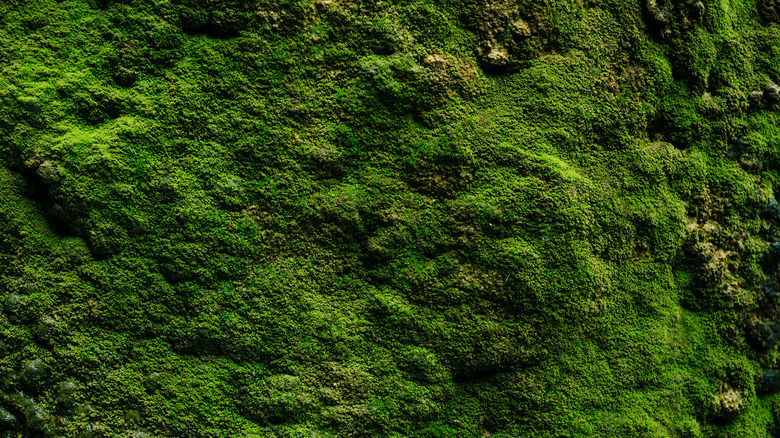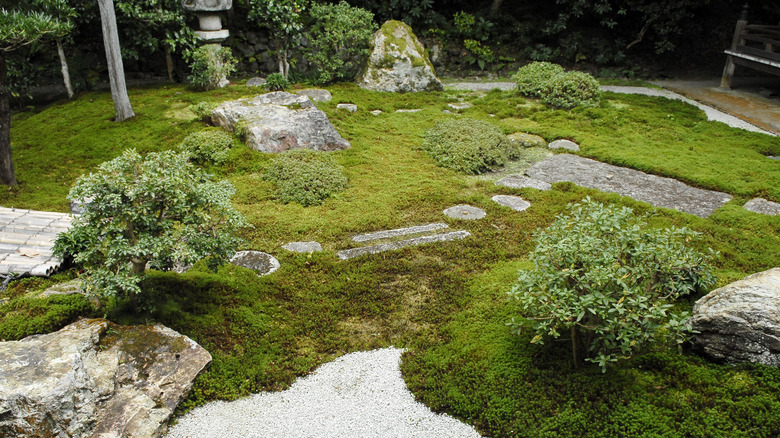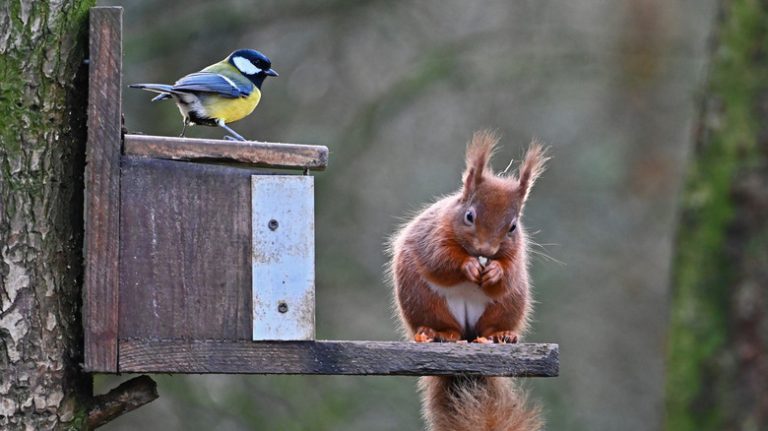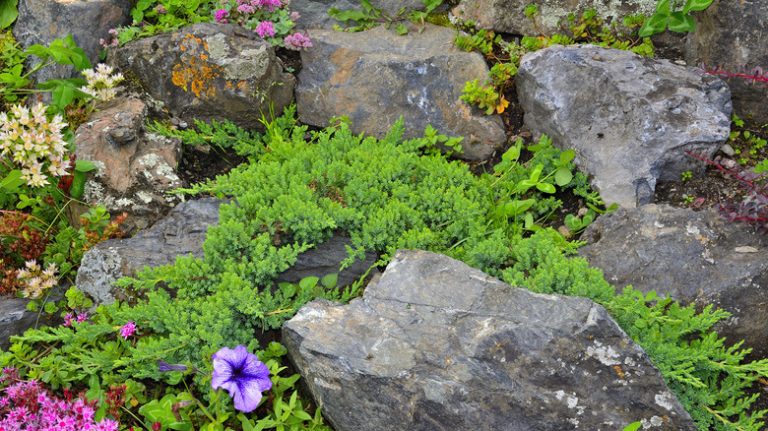If you have an abundance of shade in your yard, you may have already noticed that it’s difficult to impossible to grow a grass lawn. Grass seed usually needs sun to sprout, and many traditional turf grasses thrive best in full to partial sun. But shade is the perfect environment for creating a lawn or garden made of moss. The term moss actually refers to a number of different plants that are low-growing ground covers. These plants are often seen in forests in regions that get plenty of rain, but there are also varieties that have adapted to arid desert climates. Once established, moss is very easy to care for.
Even though most mosses need a decent amount of moisture to survive, these gardens and lawns also conserve moisture well and go dormant during periods of drought. This makes them an environmentally-conscious choice compared to traditional lawns that require a lot of water. In addition, moss gardens generate oxygen, don’t need additional fertilizers (unlike turf and grass lawns), and can absorb toxic particles in the air. All these features make moss lawns a very eco-friendly option.
If you’ve tried to grow a traditional grass lawn under a shady tree, you may have found it very challenging and wondered what your other options are. While growing a moss lawn does require some steps that are very different from growing a grass lawn, the results might be worth it. Another plus: moss lawns don’t need mowing!
What to consider before growing a moss lawn

Mosses are a very diverse part of the plant kingdom, and there are many different kinds of moss growing throughout the world. It seems to be a very adaptable plant that can thrive in many different climates and conditions. Most shade-loving mosses prefer slightly acidic soil, but sun-tolerant mosses can tolerate a more alkaline soil environment. Moss cannot be grown successfully in a full-sun location, and the afternoon sun may prove too hot for some mosses also.
Moss grows best when watered with rainwater because tap contains chemicals that may impede its growth. Having a rainwater collection system or rain barrel is a good idea, or try letting your tap water sit for 12 hours before using it to allow any chlorine to dissipate.
Before choosing a moss to plant, check out if there are any that grow natively to your area. You may already have some growing in your yard, and if so, you can encourage its spread and try transplanting pieces to other parts of your yard. You may also find mosses in other places, including clinging to old fallen trees in the woods, a moss-covered roof that needs to be replaced, on old fencing, or between sidewalk cracks. Some mosses may be protected species, so never remove the entirety of a mossy area you see out in nature.
Ideas for your moss lawn

There are many different kinds of moss available for purchase at nurseries, and the varieties may depend on your location. Before purchasing any moss for your yard, be sure it will be suited to your hardiness zone and climate. After planting, your moss will need regular watering to help it get established. Water it every day, once per day, for three weeks. But be sure not to overwater or allow any standing water. Check the weather forecast and avoid watering 24 hours prior to substantial rainfall.
Your moss lawn can be accented with some plantings, too. Hostas work well with moss, as they are also moisture-loving plants and don’t tend to spread out of control. Other shade-loving plants that can go well with moss include astilbes, brunnera (Jacob’s ladder), and pulmonaria.
The look of a moss lawn can be very enchanting, which may explain why moss is very popular for use in fairy gardens. Your moss garden can be a very special place for calm reflection or just appreciating nature’s beauty. Adding a stone walkway, a chair or bench, a sculpture, container plantings, or some well-chosen stones can make your moss garden feel like a small shady retreat.



